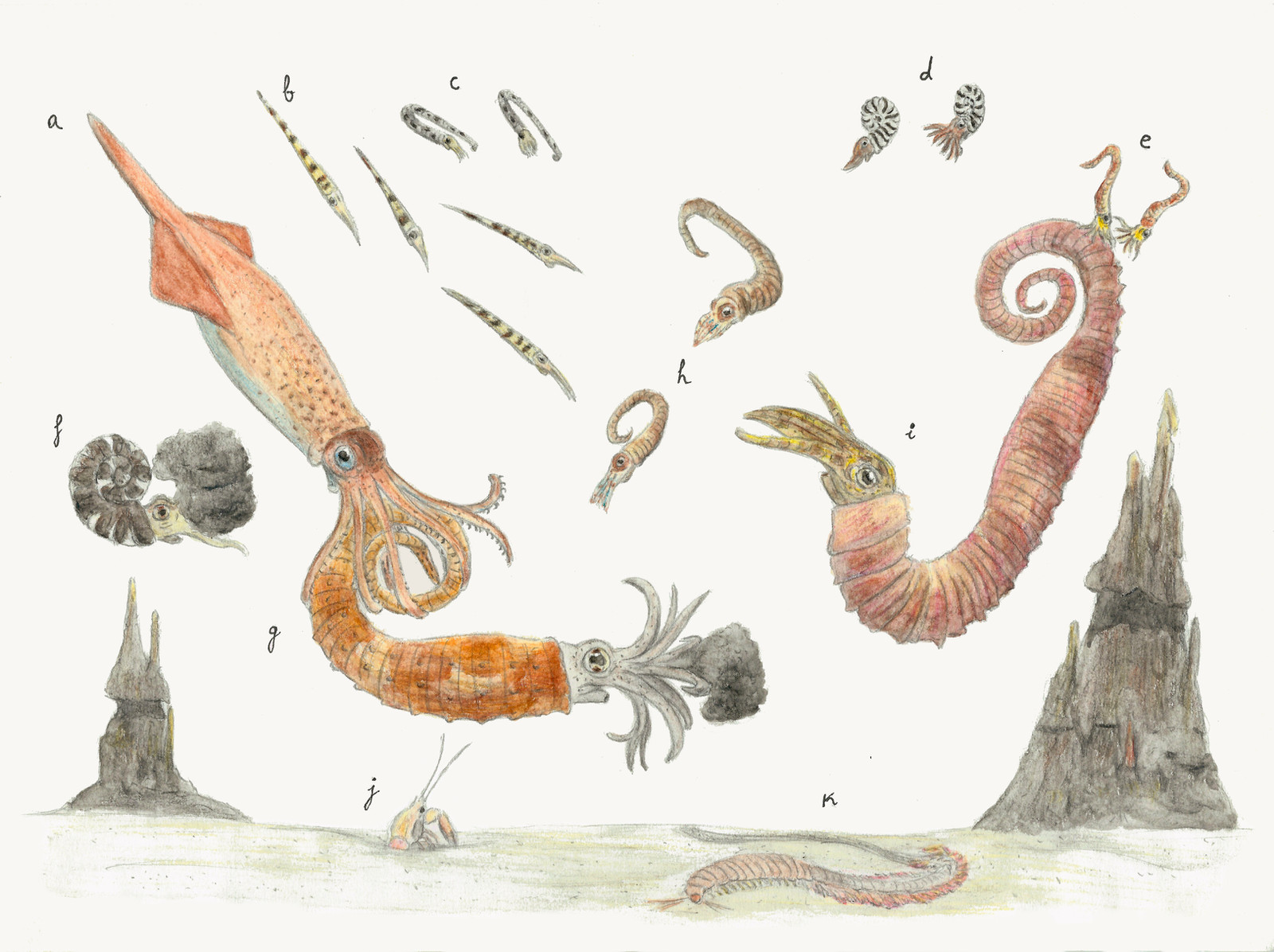HOME | DD
 DiegoOA — The fauna of Morro Formation
DiegoOA — The fauna of Morro Formation

#belemnite #ammonites #cephalopods #cretaceous #fossils #paleoart #macaronesia #cape_verde
Published: 2021-02-19 20:44:13 +0000 UTC; Views: 8141; Favourites: 136; Downloads: 0
Redirect to original
Description
The island of Maio, in the archipelago of Cape Verde, appeared during the Miocene as a result of volcanic activity, like the neighboring islands. However, this particular island is quite interesting from the geological point of view, as there are some formations that were created during the Cretaceous period, way before the archipelago began to form. These formations were the result of deposition of sediments in the open ocean, when the Atlantic was young and way narrower than today. One of these formations is the Morro Formation, which dates from the Early Cretaceous (it ranges from 145 to 115 million years ago).The Morro formation, along with an upper transitional unit, contain numerous fossils of marine creatures. There are lots of nanofossils and remains of foraminifera, but here I will focus on the fauna, comprised mostly by ammonites. Several species of different shapes and sizes appear in the formation; in particular, heteromorph ammonites are quite common. There are some belemnite and fish remains, as well as some ichnofossils created by worms and crustaceans (this indicates that these waters weren't depleted of oxygen, something that happened sometimes in the depths during the Cretaceous). It appears that at some times the area had some hydrothermal activity, with an iron-enriched environment.
In this drawing I've tried to portray many of the known genera found in the formation, though not all of them are present. It must be noted also that not all of these creatures lived at the same time. Following the letters in the picture, these are the species:
Belemnoidea
a) Mesohibolites sp.
Ammonoidea
b) Bochianites sp.
c) Mascarellina gr. hamus
d) Heinzia sp.
e) Leptohamulia cf. distans
f) Kilianella sp.
g) Toxancyloceras gr. vandenheckii
h) Eoheteroceras multicostatum
i) Lytocrioceras sp./Ancyloceras sp.
Ichnofossils
j) Thalassinoides (formed by burrowing crustaceans, worms or anemones)
k) Chondrites/Nereites (formed by polychaete worms)
After completing this drawing I found that there were also 2 fossil teuthid species found on the island: Maioteuthis morroensis and Neololigosepia stahleckeri, but I don't know in which formation were found.
With the fauna of this formation we have reached the end of this series about the extinct and fossil fauna of the Macaronesia. I may create some maps to locate the different animals I've portrayed, and there will probably be more described species in the future. However, this is the end for now. Thanks for following this series, and se you soon!







Related content
Comments: 18

👍: 1 ⏩: 0

👍: 1 ⏩: 1

👍: 0 ⏩: 1

👍: 1 ⏩: 1

👍: 0 ⏩: 1

👍: 1 ⏩: 0

👍: 0 ⏩: 1

👍: 0 ⏩: 0

👍: 1 ⏩: 1

👍: 2 ⏩: 1

👍: 2 ⏩: 1

👍: 1 ⏩: 0

👍: 0 ⏩: 1

👍: 0 ⏩: 1

👍: 0 ⏩: 0

👍: 0 ⏩: 1

👍: 0 ⏩: 0
























